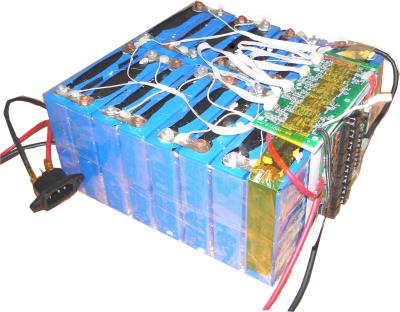 Don Hwang |
Don Hwang is regional sales manager for Noblelift North America.
Do you know the difference between lithium-ion and lithium iron?
1. The discharge rate for lithium iron phosphate outperforms lithium-ion. Lithium iron phosphate batteries have voltage discharges that are excellent at higher temperatures. The discharge rate doesn't significantly degrade the lithium iron phosphate battery as the capacity is reduced.
2. Lithium iron phosphate has a lifecycle of 1,000-10,000 cycles, while lithium-ion lasts for 500-1,000 cycles. Lithium iron phosphate batteries can handle high temperatures with minimal degradation. They have a long life for applications that have embedded systems or need to run for long periods of time before needing to be charged. With lithium-ion, meanwhile, the higher energy density makes it more unstable, especially when dealing with higher operating temperature environments. It can be negatively impacted by the operating temperature of the electronics or working components.
 Lithium iron phosphate technology |
3. When it comes to storing unused batteries, it is important to pick a chemistry that doesn't lose its charge over long periods of time. Instead, the battery should give close to the same charge performance as when it is used for over a year. Both lithium iron phosphate and lithium-ion have good long-term storage benefits. Lithium iron phosphate can be stored longer as it has a 350-day shelf life. For lithium-ion, the shelf life is roughly around 300 days.
4. Manufacturers across industries turn to lithium iron phosphate for applications where safety is a factor. Lithium iron phosphate has excellent thermal and chemical stability. This battery stays cool in higher temperatures. It is also incombustible when it is mishandled during rapid charges and discharges or when there are short circuit issues. Lithium iron phosphate does not normally experience thermal runaway, as the phosphate cathode will not burn or explode during overcharging or overheating as the battery remains cool.
In contrast, the chemistry of lithium-ion does not have the same safety advantages as lithium iron phosphate. Its high energy density decreases stability. It heats up faster during charging as a lithium-ion battery can experience thermal runaway.
5. Another safety advantage of lithium iron phosphate involves the disposal of the battery after use or failure. A lithium-ion battery made with a lithium cobalt dioxide chemistry is considered a hazardous material as it can cause allergic reactions to the eyes and skin. It can also cause severe medical issues when swallowed. So, special disposal considerations are essential for lithium-ion. On the other hand, lithium iron phosphate is non-toxic and can be disposed of more easily.